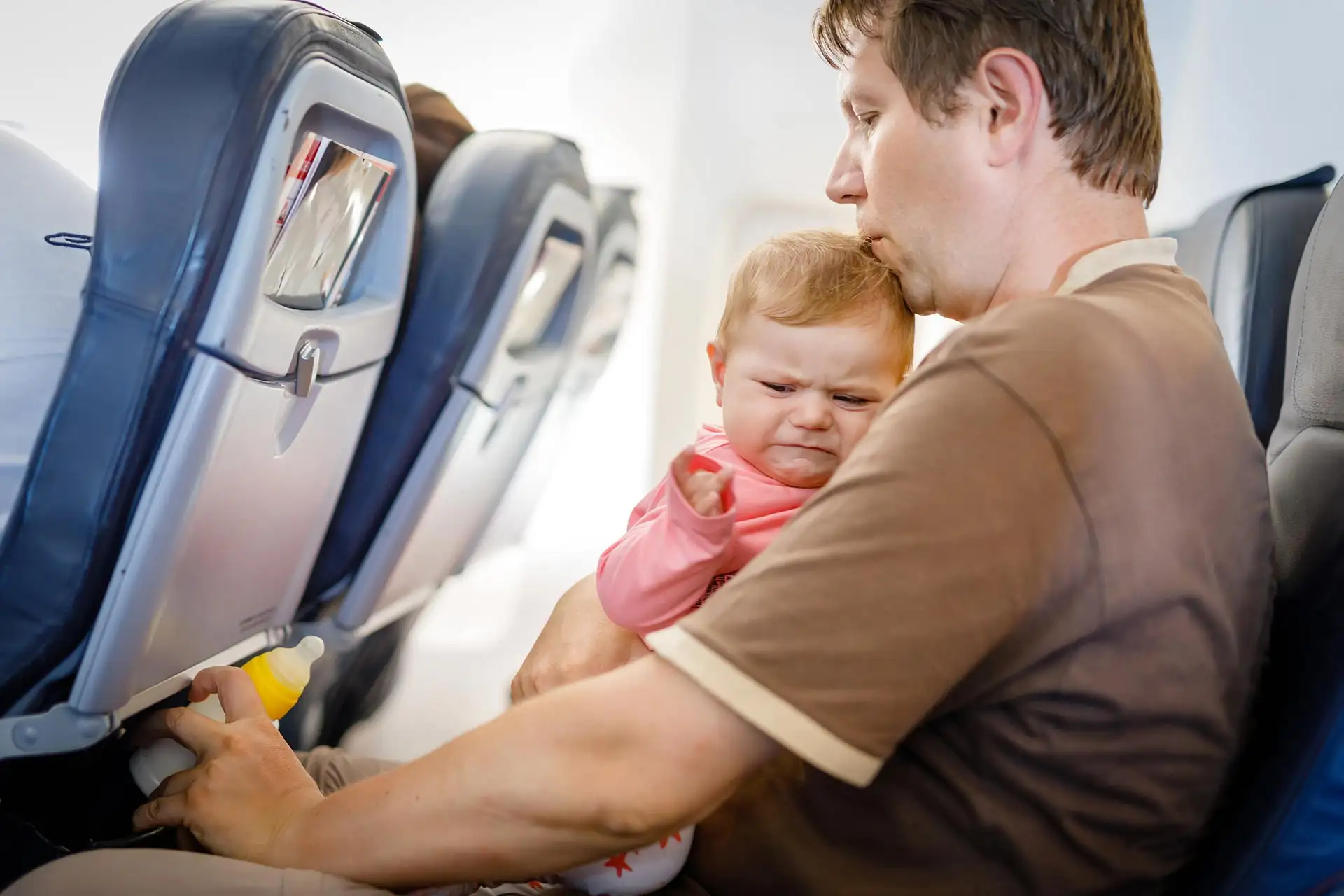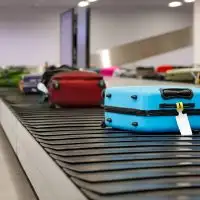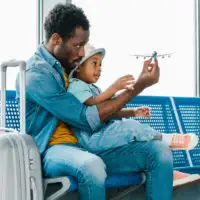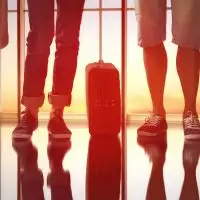The cry of a child on an airplane has become one of the most polarizing aspects of air travel in our time.
Passengers take to social media regularly complaining about crying babies; a 2018 State of Travel Survey from Airfarewatchdog revealed 46 percent of respondents prefer a separate family section of the plane for people traveling with children under 10 — and some non-U.S. airlines have created such sections.
The controversy leaves parents of young children in a difficult spot: on one hand, air travel is a necessity for families who need to travel long distances to see their relatives, or get a much-needed break. On the other hand, no one understands more than a mom or dad how exasperating it can feel to hear a baby crying non-stop in an enclosed space.
We interviewed some therapists and travel experts about how to handle the inevitable tough travel moments that arise when your kid starts crying. Here are their recommendations for navigating that emotional turbulence.

Calibrate your own expectations
“Children cry. Children cry on planes. Sometimes there is not much you can do about it — at least, not for the child,” says Raffi Bilek, a family counselor and director of the Baltimore Therapy Center. But what you can do is go into your flight equipped with the right frame of mind.
“It is important for you, as well as your child, to keep in a calm and positive frame of mind as much as possible,” he says. “If you get tense and angry, not only is that unpleasant for you, but it also is likely to make your child even more upset.”
Practical ideas for staying calm
Sounds simple, right? But, of course you know how hard it is to maintain your calm when you have an inconsolable infant screaming in your ear.
Suggestions: Practice some deep breathing techniques. Take your baby for a walk down the aisle if you can. Maybe create a mantra to repeat to yourself: “This will be over soon.” “This moment is hard, but we are safe.”
“It may help to remind yourself that what you are going through is normal,” says Bilek. “You are treading a path walked by many parents before you. You and your offspring will survive this situation, as well the people looking at you with annoyed expressions.” Experts say it’s also important to disconnect yourself from the negative energy you may be picking up on from other passengers.
Dr. Lori Baudino, licensed clinical psychologist and author of “Super Flyers: A Parent Guidebook for Airplane Travel with Children,” urges parents to focus solely on their child and his or her needs as much as possible. “When our focus is on our child and not a stranger, we’re able to understand what the child needs and soothe them faster,” she says. “Stay in touch and in tune with your child and let go of what other people on the plane are thinking.”
Use the right language with your child
Soothing words and shushing might be your go-to methods for keeping your baby calm on an airplane, as they are at home, but Baudino offers the following additional strategies.
“There are many potential reasons for your child’s big feelings — the itchiness of the seat, the confined space, needing your attention, a tummy ache, an earache, or feeling dizzy, nauseous or hungry,” she says. “Your children are not trying to annoy you.”
Try thinking about the “three Ps” when soothing your crying baby, she suggests: “Place, Person and Plan.” For place, just talk through the reality of where they are: “You are in your seat,” or “You are on my lap.” For person, talk through who is in the area — “I am here,” or “Your brother is sleeping next to you.” Plan: “What will happen next?” says Dr. Baudino. “Tell your children what to expect. The more specific, the better.”
She says this works better than traditional shushing, because a child’s nervous system is telling them they are in stress, so you can combat that by gently telling them the truth of what is really happening. “Let them know they’re seen and soothed and secure,” she says.
Practice – and receive – random acts of kindness
Occasionally, you hear about parents creating “pre-apology” goodie bags for the passengers sitting near them and their fussy babies. Experts and parent communities have varying opinions about whether these are necessary. After all, some people reason, a baby has a right to travel just as much as the other people with annoying — if not worse — habits that regularly board airplanes.
But if anything is needed in a high-stress, screaming kid on airplane situation, it’s kindness — kindness directed toward the child and his or her parents.
“When my son was 1, we had a red-eye flight back to the mainland from Hawaii. He cried for the first half of the flight and then would not sleep,” says Heidi McBain, a licensed marriage and family therapist in Flower Mound, Texas. “When everyone around me was sleeping — and my son had finally stopped crying – a flight attendant came by with a small bottle of wine and said, ‘You look like you could really use this!’ It was such a sweet, kind gesture full of empathy and caring, and made me teary-eyed,” she says.
It’s easy to pick up on the negative vibes when your child is crying, but look for the kind faces instead. Embrace the guy making goofy faces at your child from the row behind you. Share an eye-roll with a fellow mom — most parents have been in your shoes before. And the next flight you’re on where you hear another family struggling with a crying child, try your best to practice kindness, whether it’s sending a glass of wine, or even just a sympathetic smile.
Our team of parents and travel experts chooses each product and service we recommend. Anything you purchase through links on our site may earn us a commission.






